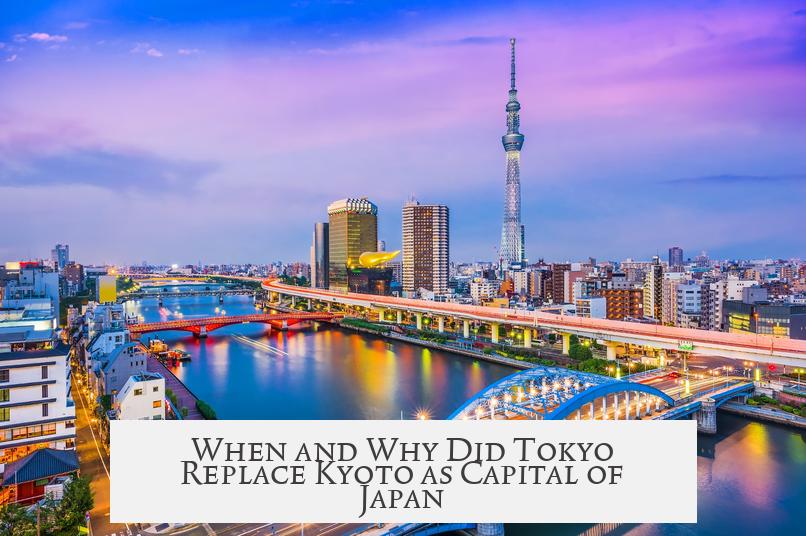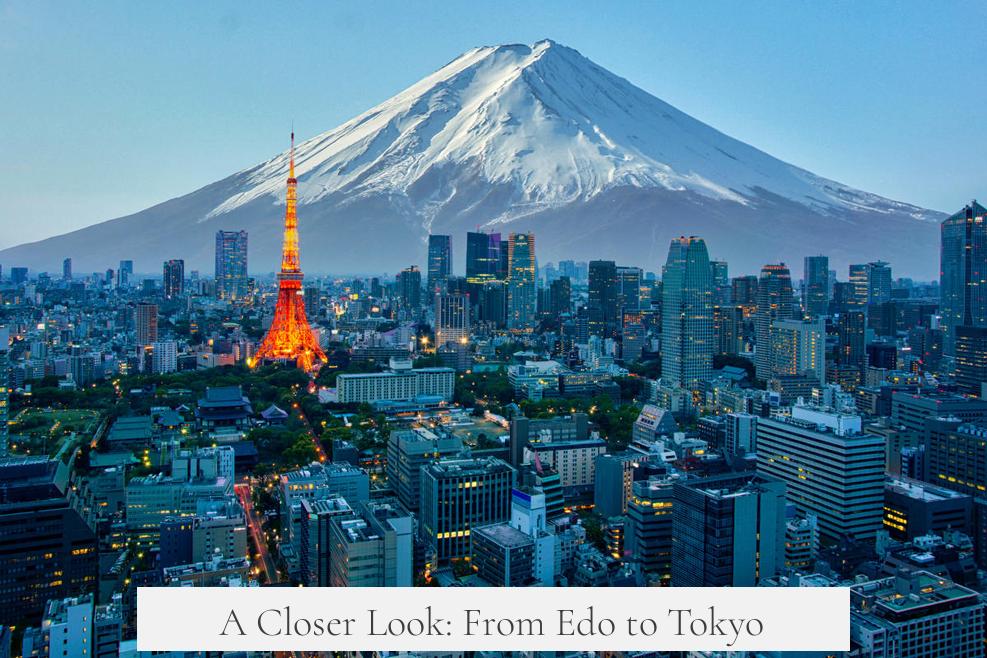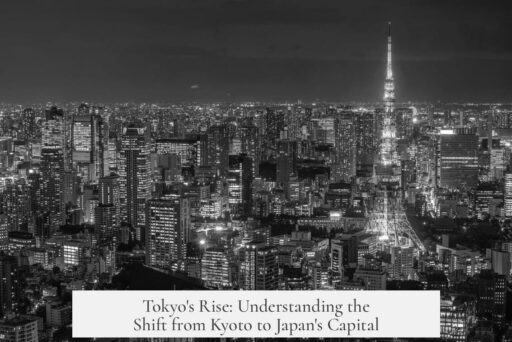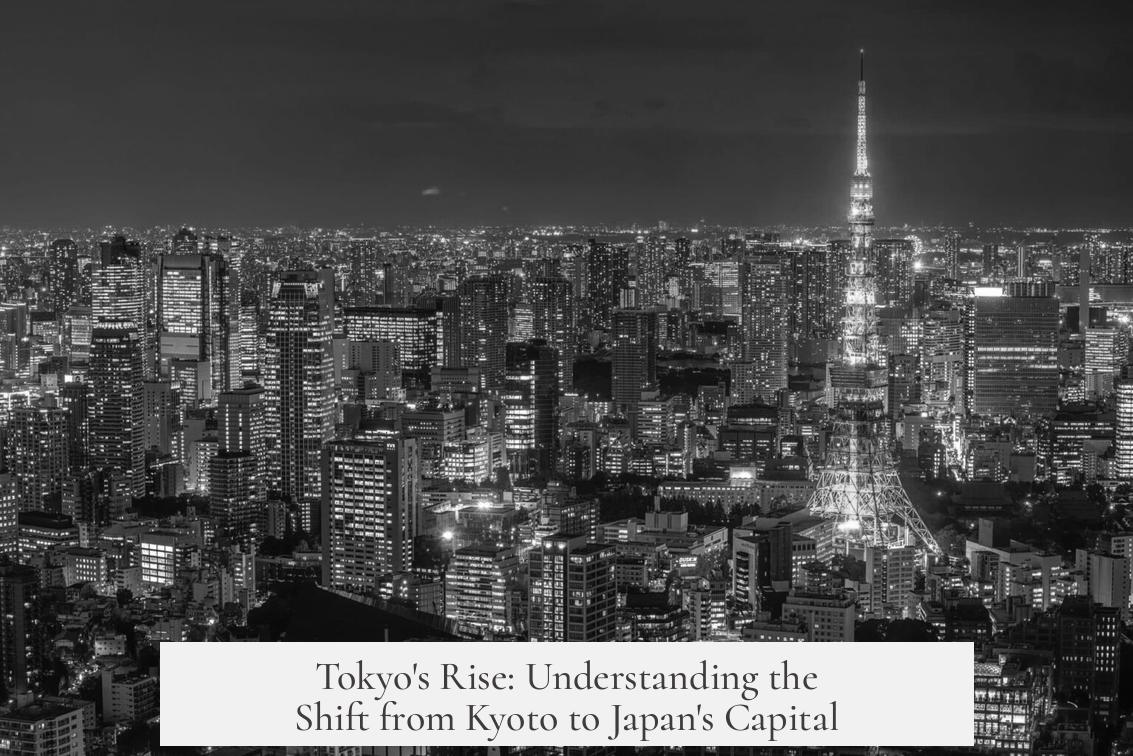Tokyo replaced Kyoto as Japan’s capital in 1869, following the end of the Boshin War and the fall of the Tokugawa Shogunate. The move marked the restoration of direct Imperial rule. Edo, the seat of the Tokugawa Shogunate, was renamed Tokyo, meaning “Eastern Capital,” and was declared the new capital city. This transition reflected shifting political and economic realities rather than a mere symbolic change.
Kyoto served as Japan’s official capital for over a thousand years. Despite this long-standing status, real political power had been centered in Edo since the early 1600s. The Tokugawa Shogunate established its headquarters in Edo, and major political decisions were made there. This situation created a disconnect between formal capital status and where influence truly resided.
The decision to move the capital to Tokyo aligned official status with existing power structures. Tokyo had outgrown Kyoto in both population and economic importance by the mid-19th century. It was a bustling metropolis with extensive trade networks and political clout. The Meiji government aimed to consolidate power centrally, tapping into Tokyo’s growing influence.
- Edo’s role as the Shogunate’s seat made it the true political center long before it became the capital.
- Renaming Edo as Tokyo symbolized a new era with the emperor’s presence restored in the eastern city.
- The move enhanced administrative efficiency by situating the capital in Japan’s largest urban and economic hub.
- Kyoto retained cultural and historical significance but lost its political primacy.
In summary, the capital shifted from Kyoto to Tokyo in 1869 to reflect the actual locus of political power and economic vitality. The change followed the Tokugawa Shogunate’s defeat and the Meiji Restoration, centralizing authority under the emperor. It also acknowledged Tokyo’s status as the country’s leading city, which had been the political and economic heart of Japan for over two centuries.
- The capital moved officially in 1869 after the Boshin War’s conclusion.
- Edo was renamed Tokyo, signaling a political and symbolic shift.
- Power had been centered in Edo/Tokyo since the early 1600s despite Kyoto’s historical status.
- Tokyo was larger, richer, and more politically significant than Kyoto at the time.
When and Why Did Tokyo Replace Kyoto as Capital of Japan?

Tokyo officially replaced Kyoto as Japan’s capital in 1869, right after the Boshin War ended. This was a major turning point in Japanese history where the Tokugawa Shogunate fell and the Imperial family regained direct control. In a dramatic shift, the city of Edo was renamed Tokyo, meaning “Eastern Capital,” marking its new status.
The story of Japan’s capital is not just about a place—it’s about politics, power, and progress. The capital didn’t just jump from one city to another overnight. Instead, it was the result of centuries of hidden shifts in where real power lived.
People often imagine Kyoto, with its elegant temples and ancient charm, as the unbroken heart of Japanese leadership. And it was—on paper—for more than a thousand years. But behind that official title, something else was happening. Since the early 1600s, political power had quietly migrated eastward to Edo.
Edo was the power hub. The Tokugawa Shogunate chose it as their stronghold, and it became the real stage where decisions shaping the future were made. Kyoto remained the Emperor’s symbolic home, but Edo was where warfare, diplomacy, and governance happened. Imagine a city that looked calm but was buzzing with secret meetings, policies, and influence. That was Edo.
Why move the capital then, if the true control was already in Edo? The formal switch in 1869 was part practical, part symbolic.
Symbolism of the Imperial Return to Power
The Boshin War wasn’t just a battle; it marked the end of feudal rule and the dawn of modernization under the Emperor. Moving the capital to Tokyo signaled that Tokyo was no longer just the Shogun’s playground but the Emperor’s seat. The imperial court reclaimed power, choosing to reside in Edo, cementing Tokyo as the true capital.
This move was a flash of political fireworks. It broadcast that Japan was changing. The old order had ended. The future was eastward, urban, industrial, and dynamic. Tokyo wasn’t just renamed; it was reborn.
Economic and Demographic Advantages
Tokyo, formerly Edo, was already a bustling metropolis. It was Japan’s largest city, a vital economic engine, with a population that dwarfed Kyoto’s. Think of it as trading a calm provincial town for a fast-growing metropolis full of energy and resources.
This advantage matters more than you’d think. Capitals aren’t just symbols; they function as political, economic, and cultural centers. Tokyo’s size and wealth made it a logical, practical base for running a rapidly modernizing Japan. The government could tap into existing infrastructure, trade networks, and the larger talent pool to push reforms forward.
Kyoto retained its cultural mystique, but Tokyo was the real powerhouse where budgets were approved and futures decided. This balance between symbolism and actual authority was the crux of the capital transfer.
A Closer Look: From Edo to Tokyo

Edo wasn’t just any city. It flourished under the Shogunate’s watch, growing to one of the world’s largest urban areas by the 18th century. The decision to rename it Tokyo literally means “Eastern Capital,” emphasizing the new political geography. It was a clever move to tie old traditions to new beginnings.
Renaming Edo as Tokyo isn’t just rebranding. It’s a clear declaration: power had shifted east. For centuries, Kyoto was the revered traditional capital. Now, Tokyo was taking the torch in power, economy, and influence.
Why Not Just Keep the Capital in Kyoto?
Good question. Kyoto had the royal court, centuries of heritage, and undeniable cultural weight. However, its geographic location wasn’t ideal for rapid modernization. It was smaller, less connected by emerging transport routes, and less suited for the industrial age that Japan was entering.
Moreover, moving to Tokyo aligned with the government’s broader agenda of centralization. The Meiji rulers wanted the Emperor to be a living symbol of modern Japan, accessible and tangible, rather than a distant figurehead.
Lessons from the Capital Shift
- Power isn’t always where tradition lies. Political might often moves quietly before official records catch up.
- Locations matter. Capitals must meet practical demands like population, economic clout, and connectivity.
- Symbols influence history. The shift to Tokyo was as much about cementing new ideas as it was about governance.
For anyone curious about how cities evolve and the dance between power and tradition, Tokyo’s rise as capital is a fascinating case. It shows how political shifts, war outcomes, and economic realities intertwine to shape history.
In Summary
The capital officially moved to Tokyo in 1869 because, although Kyoto had the title for over a millennium, Edo had been the true political power center for centuries. After the Boshin War, the Imperial government took the chance to declare Edo the capital, renaming it Tokyo—the Eastern Capital. This move was both practical and symbolic: Tokyo was already bigger, more economically vital, and politically dominant. It fit the new Japan’s ambitions as a modern, centralized state.
So next time you think of Japan’s capital, remember: Tokyo didn’t just replace Kyoto overnight. It was a long, storied shift from symbolic royalty to real political power—a tale of war, politics, and modernization that reshaped a nation.




